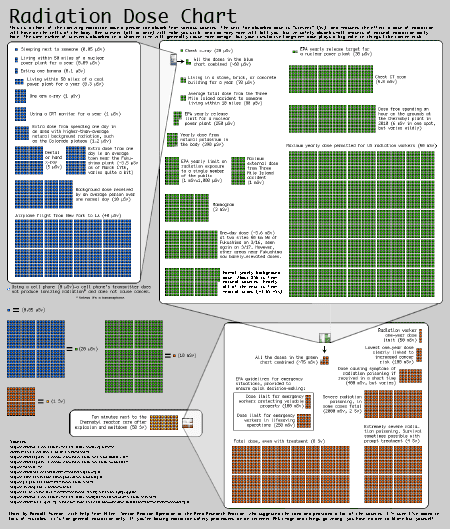By Matin Durrani

The impact of the earthquake and subsequent tsunami that hit Japan earlier this month has been truly devastating, with the latest reports suggesting 9000 people have died and a further 13,000 currently unaccounted for.
But if you spend your days following media reports of the disaster, you’d be forgiven for thinking that the biggest catastrophe has been the damage to the Fukushima Daiichi nuclear plant.
I’ve sometimes felt as if the mainstream media almost want an epic nuclear disaster to take place so that they have something to get their teeth into and fill their rolling TV news bulletins.
I was therefore pleased to see a sober assessment of the true nuclear danger from the plant from a recent blog entry by Randall Munroe, a physics graduate best known for his comic-strip website xkcd.
The picture above, which you’ll need to click here to see in full, tries to quantify to the best of Munroe’s ability the real risks from the plant.
Sure, it would be great if the reactor had survived the earthquake and tsunami – and there’s no harm making sure other reactors around the world are as safe as they can be as many countries are doing – but this shouldn’t be the signal for the world to end the recent revival in nuclear power.
You only have to think about the damage caused by the BP oil spill in the Gulf of Mexico last year to see a true environmental disaster.
Of course, the Achilles heel of the nuclear industry is the fear of “radiation” and ionizing radiation in particular. You can’t see it or smell it, which makes it, to some at least, creepily scary.
But hopefully Munroe’s chart puts things in perspective a bit.
In the meantime, we’ll continue to follow how the quake is affecting Japan’s physics community. Things are looking not too bad and the odd bent beamline is far from catastrophic given what else has been taking place.



